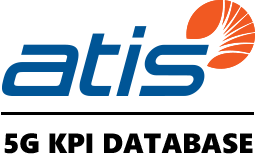Filter
37 devices found
Slice Type
E2E Latency
Jitter
Data Rate
Availability
Criticality
Common Communication Mode
Communication Direction
Data Reporting Mode
Mobility (type/speed)
Service Continuity
Device Autonomy (Power Constrained)
Connectivity Type
Priority Services (NS/EP)
Guaranteed Service
Security
Lifespan
Device Density
Location Based Services
Application Group
- Select Application Group -
Applications
- Select Applications -
Devices
Application Group: Nature Life
Application: Aquatic Animal Tracking
Application Group: Smart Cities
Application: Smart Buildings/Homes
Application Group: Nature Life
Application: Wildlife Conservation/Anti-Poaching
Application Group: Industrial Automation
Application: Smart Logistics
Application Group: Asset Management
Application: Automated Asset Traceability and Monitoring
Application Group: Environmental Monitoring
Application: Temperature Measurement
Application Group: Environmental Monitoring
Application: Temperature Measurement
Application Group: Nature Life
Application: Urban Pest Management and Control
Application Group: Smart Energy
Application: Renewable Energy
Application Group: Nature Life
Application: Wildlife Conservation/Anti-Poaching
Application Group: Smart Cities
Application: Urban Package Delivery
Application Group: Environmental Monitoring
Application: Temperature Measurement
Application Group: Smart Energy
Application: Renewable Energy
Application Group: Smart Cities
Application: Smart Buildings/Homes
Application Group: Agriculture 4.0
Application: Smart Greenhouse
Application Group: Asset Management
Application: Automated Asset Traceability and Monitoring
Application Group: Environmental Monitoring
Application: Air Quality Monitoring
Application Group: Smart Cities
Application: Smart Parking
Application Group: Nature Life
Application: Urban Pest Management and Control
Application Group: Smart Cities
Application: Smart Waste Pickup
Application Group: Environmental Monitoring
Application: Disaster Prediction and Monitoring
Application Group: Smart Cities
Application: Smart Buildings/Homes
Application Group: Environmental Monitoring
Application: Disaster Prediction and Monitoring
Application Group: Agriculture 4.0
Application: Livestock Monitoring
Application Group: Smart Cities
Application: Smart Buildings/Homes
Application Group: Industrial Automation
Application: Packaging Efficiency
Application Group: Agriculture 4.0
Application: Smart Fertilization
Application Group: Smart Energy
Application: Smart Grid
Application Group: Smart Cities
Application: Smart Water
Application Group: Smart Cities
Application: Smart Waste Management
Application Group: Agriculture 4.0
Application: Smart Irrigation
Application Group: Environmental Monitoring
Application: Air Quality Monitoring
Application Group: Nature Life
Application: Urban Pest Management and Control
Application Group: Smart Cities
Application: Public Transport
Application Group: Environmental Monitoring
Application: Wind Measurement
Application Group: Smart Energy
Application: Renewable Energy
Application Group: Agriculture 4.0
Application: Smart Pest Control and Early Disease Detection
